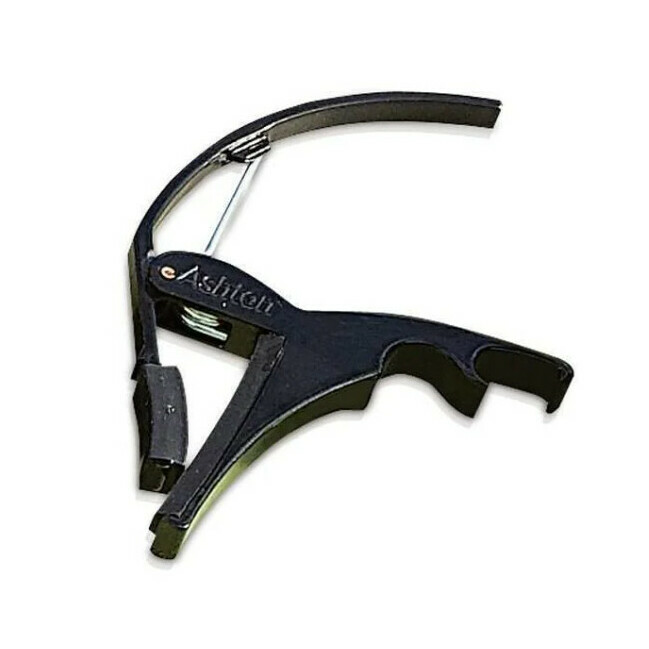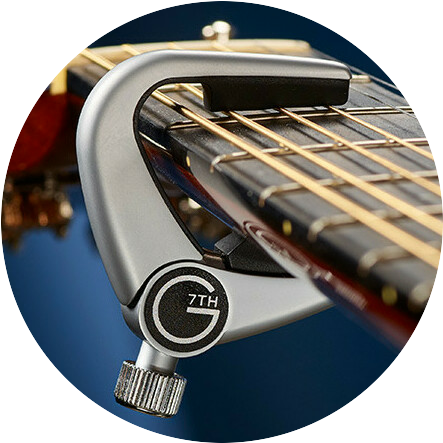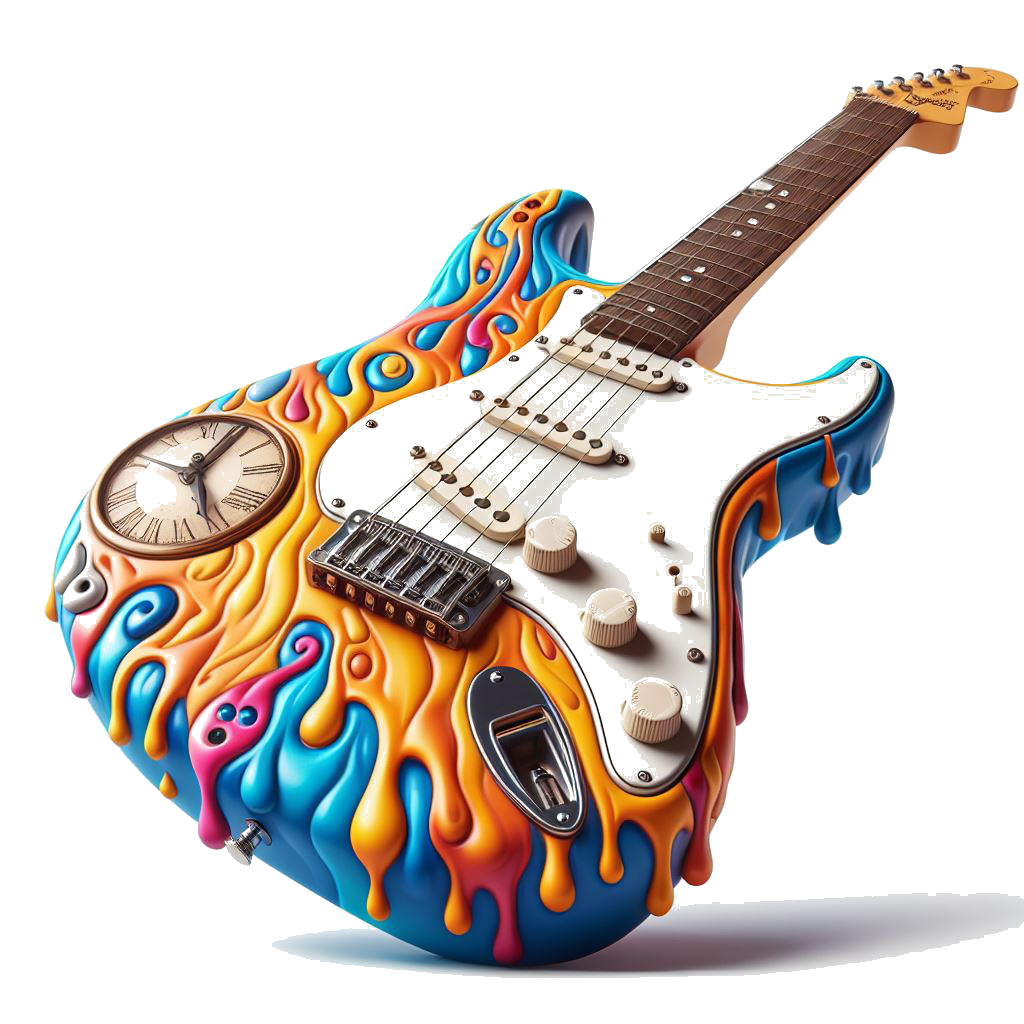The guitar capo, a pivotal accessory for guitarists across genres, remains simple yet wields the power to profoundly transform music. Its primary function? To clamp across the guitar’s fingerboard at a chosen fret, instantly shortening the string length and elevating their pitch. This seemingly minor adjustment facilitates key changes and introduces a realm of sonic possibilities, catering to both novices and seasoned players.
Types of Capos and Their Characteristics
Diving into the capo’s world reveals a surprising variety, each tailored to specific needs and preferences.

The spring-loaded capo, for example, offers ease of use and quick changes, ideal for players who need to switch positions frequently during a performance.

The trigger-style capo, similar in convenience, allows for rapid, one-handed adjustments, making it a favorite among gigging musicians. For those seeking precision,

the screw-tightened capo provides meticulous control over the pressure applied to the strings, ensuring minimal tuning disruptions.

Lastly, the partial capo—a tool of creativity—enables blocking certain strings, opening doors to unique chord voicings and textures.
The Role of Capos in Music
The capo’s ability to change a guitar’s key effortlessly without altering chord shapes presents a boon to singers and songwriters. This function allows musicians to adapt the music to their vocal range or the key of other instruments, facilitating collaboration and versatility in songwriting. The capo’s utility shines in tracks like “Here Comes the Sun” by The Beatles, where George Harrison’s use of a capo creates the song’s bright, uplifting sound, demonstrating the capo’s role in achieving musical expression and diversity. For instance, in “Hotel California” by the Eagles, the capo is placed on the 7th fret, allowing the guitarists to play open chords that sound higher in pitch, contributing to the song’s hauntingly beautiful texture. This use showcases how a capo can enhance a song’s atmosphere and mood, making it an essential tool for creating iconic sounds.
In the realm of folk music, “Fire and Rain” by James Taylor serves as a prime example of capo usage to match the vocal range and create a warm, intimate sound. Taylor often places his capo high on the fretboard, demonstrating how the capo can be used to tailor songs to the singer’s voice, thus enhancing the emotional impact of the performance.
Tracy Chapman’s “Fast Car” illustrates another facet of capo use, facilitating fingerpicking patterns central to the song’s driving, rhythmic feel. Positioned on the 2nd fret, the capo allows Chapman to maintain open chord shapes that are easier to play, highlighting the capo’s role in achieving technical guitar work and distinctive soundscapes.
Lastly, “Capo 4th Fret” (a nod to the common notation found in songbooks indicating capo placement) by various artists across genres underscores the capo’s role in musical adaptation and experimentation. Whether it’s altering the song’s key to match the ensemble’s needs or exploring new voicings and textures, the capo remains a tool of infinite musical exploration.
These examples underscore the capo’s transformative power in music creation, enabling artists to push boundaries, adapt to their creative visions, and explore new horizons in sound and composition. Its utility spans simple key changes to complex arrangements, making it an invaluable asset in the musician’s toolkit.
Creative Uses of Capos
This tool transcends its fundamental purpose of key modulation, opening a vast landscape of musical exploration and innovation. The capo’s versatility allows guitarists to delve into realms of sound and technique that enrich their musical expression and challenge conventional playing styles.
Complex Fingerpicking Patterns
The capo’s ability to raise the pitch of the strings without altering their relative tuning enables guitarists to access fingerpicking patterns that would otherwise be cumbersome or impossible to play in standard tuning. For example, Nick Drake’s use of alternate tunings combined with capo placement on songs like “Pink Moon” showcases how a capo can facilitate intricate fingerpicking patterns that contribute to the ethereal quality of his music. The capo allows for open-string resonances in higher pitches, making complex patterns more fluid and accessible.
Mimicking Alternate Tunings
Using multiple capos or partial capos can simulate alternate tuning effects without returning the guitar. This technique can offer the sonic benefits of alternate tunings—such as open, modal, or dropped tunings—while allowing the player to use familiar chord shapes. Adrian Legg, a virtuoso acoustic guitarist, frequently employs partial capos to create unique tunings that enrich his compositions, enabling him to blend melodic lines with rich harmonies in a way that would be difficult to achieve otherwise.
Harp Guitar Effects
The strategic placement of a partial capo can also mimic the sound of a harp guitar, adding bass or treble strings that resonate open while the rest of the guitar is played normally. This technique can be heard in the music of Don Ross, a fingerstyle guitarist who uses partial capos to extend the harmonic range of his guitar, creating lush, layered textures that enhance his melodies and chord progressions.
Expanded Musical Vocabulary
Capos allow guitarists to explore new voicings and textures, contributing to a broader musical vocabulary. Jon Gomm, known for his percussive fingerstyle guitar playing, uses capos not only for changing keys but also for tapping and percussive techniques, which gives his performances a dynamic and rhythmic complexity that defies traditional guitar roles.
Creative Songwriting and Arrangement
The capo’s capacity to alter the guitar’s sound inspires innovative approaches to songwriting and arrangement. Ed Sheeran’s “Photograph” employs a capo on the 2nd fret, facilitating a combination of open chords and fingerpicking that contributes to the song’s emotive and intimate feel. This example illustrates how a capo can be a powerful tool in crafting songs that connect with listeners on a deep level.
In conclusion, the capo is more than a mere accessory for changing keys; it’s a catalyst for creativity and exploration in guitar playing. By enabling complex fingerpicking patterns, mimicking alternate tunings, creating harp guitar effects, expanding musical vocabulary, and inspiring creative songwriting, the capo empowers guitarists to push the boundaries of their instrument and explore new musical horizons.
Tips for Choosing and Using Capos
Selecting the ideal capo is akin to choosing a tool that becomes an extension of both the guitarist and the instrument, enhancing performance without compromising the guitar’s natural sound or playability. This process requires attention to several key factors to ensure the capo integrates seamlessly with the guitarist’s technique and the instrument’s characteristics.
Considering the Guitar’s Neck Profile
The guitar’s neck profile—its shape and size—plays a significant role in selecting a capo. Guitars with a flat fretboard may need a capo with a wider, flatter pad to ensure even pressure across all strings, while instruments with a more pronounced radius require a capo with a curved pad to match the fretboard’s contour. This alignment is vital for avoiding string buzz and ensuring the capo does not inadvertently bend strings out of tune.
Material of the Capo
Capos are made from various materials, each offering different benefits. Metal capos are durable and provide a firm grip, but they can be heavier, which might not be ideal for some playing styles or those who prefer a lighter touch. Plastic capos are lightweight and less intrusive, suitable for guitarists prioritizing ease of use and portability. Some capos also feature silicone or rubber padding to protect the guitar’s finish and ensure softer contact with the strings, minimizing potential damage or tuning issues.
Specific Features for Playing Style
Capos come with a range of features designed to cater to different playing styles. For instance, an adjustable tension capo allows the player to fine-tune the pressure applied to the strings, which can be crucial for delicate fingerstyle pieces where excessive pressure might dampen the guitar’s resonance. On the other hand, quick-release capos offer convenience for performers who need to change capo positions swiftly between or during songs.
Proper Placement and Maintenance
Correct placement of the capo is just behind the fret, not directly on top of it, to ensure it doesn’t interfere with finger placement or alter the pitch of the notes being played. It’s essential that the capo applies even pressure across all strings to prevent any from ringing out or being muted.
Regular maintenance of the capo and the guitar contributes significantly to their longevity. Cleaning the capo’s pads and the guitar’s neck regularly with a soft, dry cloth removes oils and dirt that could affect their performance. Inspecting the capo for signs of wear and tear, such as a weakened spring or degrading padding, can prevent unexpected issues during use.
In conclusion, the guitar capo is more than a simple accessory; it’s a transformative tool that opens up a world of musical possibilities. From facilitating key changes to enabling creative expression, the capo is an essential element in the guitarist’s toolkit. Whether you’re a beginner seeking to simplify chord transitions or an experienced player exploring new textures and tunings, the capo offers a range of functionalities to enhance your musical journey.
Feel free to post a comment below.
